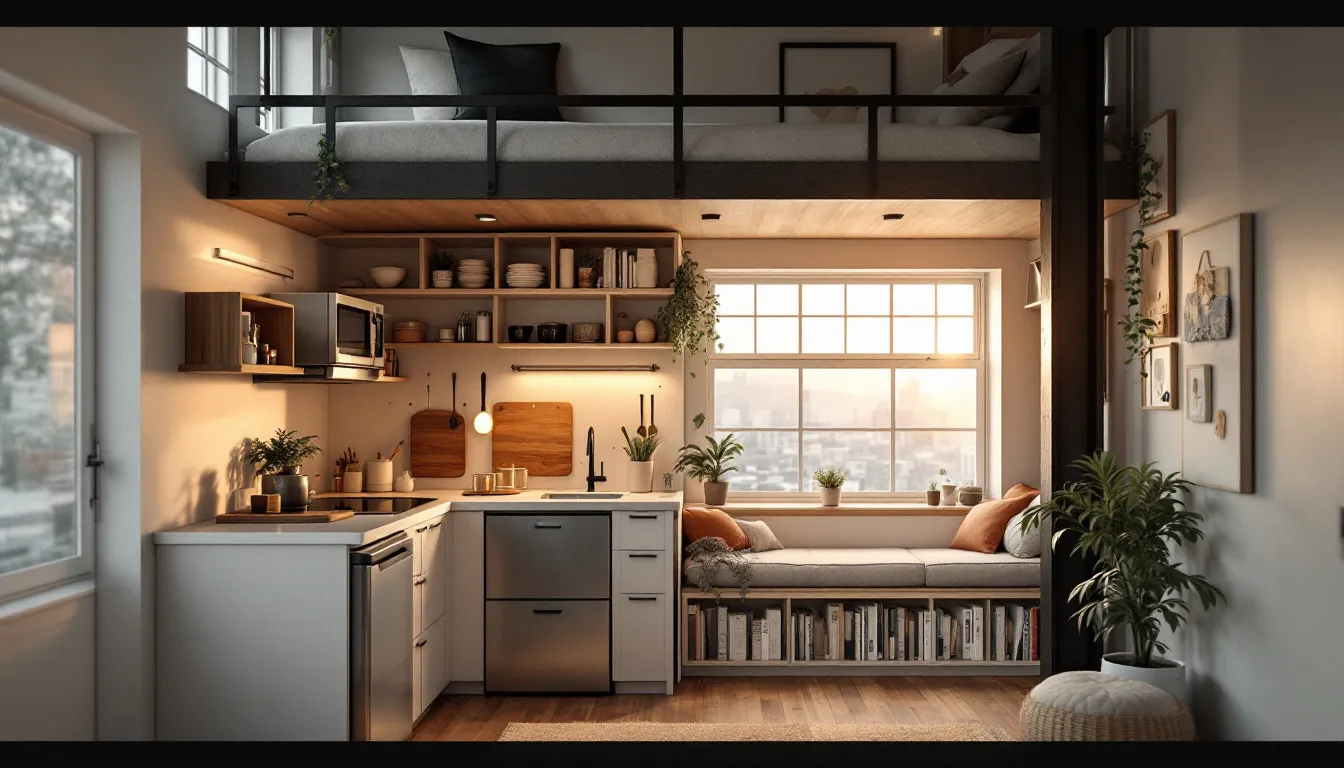Chapel decorative elements shape the atmosphere of worship spaces, blending visual design with spiritual purpose. From architectural features like vaulted ceilings and stained glass to furnishings like altars and pews, every detail contributes to the sacred ambiance. Over time, chapel designs have evolved - early American simplicity gave way to Gothic Revival grandeur, and now modern chapels balance contemporary materials with functional needs. Regional and denominational styles also influence decor, from adobe walls in the Southwest to colonial simplicity in New England. Whether traditional or modern, chapel interiors aim to inspire reflection and connection through thoughtful design choices.
Key takeaways:
- Decorative elements include architectural details, furnishings, and artistic features like stained glass.
- Historical evolution: From austere early chapels to ornate Gothic Revival and modern flexible designs.
- Regional influences: Local materials and styles shape chapel aesthetics across the U.S.
- Modern updates: Sustainable materials, energy-efficient lighting, and adaptable designs meet today’s needs.
A well-designed chapel honors its heritage while creating a welcoming space for worship and community.
How a Catholic Chapel's Design Points to God
Key Decorative Features of Chapel Interiors
Chapel interiors are designed to inspire worship while meeting the practical needs of the congregation. These spaces combine artistry and functionality, creating an atmosphere that fosters reflection and devotion. From altars to ceilings and lighting, each element plays a role in shaping the spiritual experience.
Altars: The Heart of the Chapel
The altar holds a central place in chapel design, serving as both a focal point and a symbol of faith. Its design, materials, and placement are carefully considered to reflect tradition and modern sensibilities. In Protestant chapels, altars often feature durable woods like oak or walnut, chosen for their timeless appeal. Catholic and Episcopal chapels frequently favor marble, a material associated with elegance and liturgical importance. Modern altars sometimes incorporate mixed materials - stone, wood, and subtle metal details - to bridge the gap between tradition and contemporary aesthetics.
The positioning of the altar is equally significant. Free-standing altars, a design embraced after liturgical reforms in the 1960s, allow for a more inclusive worship experience by enabling the congregation to gather around. Decorative elements like candlesticks, crosses, and fabric accents further enhance the altar's visual and spiritual impact.
Ceilings and Architectural Details
Ceilings play a major role in defining the character and atmosphere of a chapel. Exposed beam ceilings, crafted from woods like Douglas fir or southern pine, bring warmth and a sense of tradition to the space. Vaulted ceilings - whether barrel-shaped or groin-vaulted - create a sense of grandeur, drawing the eye upward and evoking feelings of awe. For a more intricate touch, coffered ceilings use recessed panels to add depth and elegance without overwhelming smaller chapels.
Painted ceiling details, from simple stenciled designs to elaborate murals with gilded accents, often incorporate religious symbols and imagery, enriching the worship experience. Acoustics are another consideration; features like sound-absorbing panels ensure that sermons and music resonate clearly throughout the space.
Lighting: A Blend of Natural and Artificial
Lighting is essential in shaping the chapel's mood and functionality. Natural light, often filtered through stained glass windows, doubles as a form of religious art, casting colorful patterns that enhance the sacred atmosphere. Modern designs may incorporate clear windows with energy-efficient coatings or shading systems, allowing for precise control of light levels throughout the day.
Artificial lighting complements natural sources, with advancements in LED technology offering flexibility in intensity and color. Fixtures like chandeliers and pendant lights highlight architectural features, while integrated control systems adjust brightness and color temperature to suit different services. Together, natural and artificial lighting work in harmony to create an inviting and spiritual environment.
Choosing and Integrating Chapel Decorative Elements
Designing a chapel that feels cohesive means carefully selecting decorative elements that align with the congregation's needs while respecting the space's architectural heritage. The goal is to create an environment that enhances worship and fosters a sense of connection.
Balancing Old and New Styles
Blending traditional charm with modern updates starts by identifying the historical features that give your chapel its unique character. Elements like stone arches, wooden pews, or stained glass windows often serve as the heart of a chapel's design and should be preserved to maintain its essence.
When introducing contemporary touches, focus on materials that complement the existing ones. For instance, if your chapel has original wooden pews, consider a modern altar crafted from reclaimed wood with sleek, geometric lines. This pairing keeps the design cohesive while adding a fresh perspective.
To modernize traditional spaces, you can incorporate subtle updates like LED strip lighting tucked into moldings or contemporary pendant lights that harmonize with original fixtures. Neutral color schemes help unify the old and new, while vibrant accents - introduced through textiles, artwork, or seasonal decorations - add depth without permanently altering the space.
Respecting scale and proportion is key when adding new elements. In chapels with high ceilings and exposed wooden beams, choose fixtures that enhance the grandeur rather than overshadow it. This thoughtful approach ensures that updates feel natural, not intrusive.
Throughout history, chapels have evolved by skillfully merging tradition with contemporary innovation, and this philosophy can also extend to environmentally conscious design practices.
Eco-Friendly Chapel Design
Sustainability is becoming a priority for many congregations as they seek to align their values with their worship spaces. Using reclaimed materials not only reduces environmental impact but also brings a sense of history and character that new materials often lack.
Opting for low-VOC (volatile organic compounds) paints and finishes helps maintain good indoor air quality, which is especially important in spaces where people gather frequently. Energy-efficient lighting systems, paired with smart controls, allow for precise adjustments in brightness and color temperature, accommodating the varying needs of services while reducing energy costs.
Sustainable textiles, such as organic cotton, hemp, or linen, are excellent choices for altar cloths, banners, and cushions. Many of these materials come in liturgical colors and can be customized by local artisans, supporting both eco-friendly goals and community engagement. These choices not only reflect environmental stewardship but also contribute to the chapel’s enduring value for future generations.
Practical Considerations for Small and Large Chapels
The size of a chapel significantly influences design decisions, from decorative elements to budget priorities. Smaller chapels require careful attention to scale and functionality, while larger spaces benefit from defined focal points that create a sense of intimacy.
In compact chapels, vertical design elements - like tall windows, vertical paneling, or upward-focused lighting - can make the space feel taller and more expansive. A single, striking piece, such as a carved cross or modern sculpture, can serve as a focal point without overwhelming the room.
For larger chapels, strategic lighting can help create zones within the space, making it feel more welcoming and less cavernous. Decorative elements that also improve acoustics - such as fabric banners, wooden panels, or carpeting - can enhance both sound quality and visual appeal.
Budget considerations also vary by chapel size. Prioritize essentials like lighting, acoustics, and altar design. Flexible seating arrangements can make the space more versatile, and built-in storage solutions for seasonal decorations or worship materials can keep the design functional and uncluttered.
sbb-itb-1be9014
Comparative Analysis of Decorative Options
Choosing the right decorative elements for a chapel involves weighing various materials, styles, and design approaches. Each decision impacts not only the initial cost but also the long-term upkeep and functionality of the space. Let’s break down the key considerations for materials, styles, and lighting options.
Material Options for Decorative Elements
The materials you select for a chapel's decor significantly affect its overall look, durability, and maintenance needs. Here’s a closer look at some popular choices:
- Wood: A classic option for pews, altars, and trim, wood - especially hardwoods like oak and maple - offers timeless elegance and durability. With the right care, wooden elements can last for decades.
- Stone: Materials like limestone, marble, and granite are known for their longevity and strength. While stone requires occasional cleaning and sealing, its weight demands careful structural planning, particularly for ceiling applications.
- Metal: Metals such as bronze, brass, and stainless steel are often used for items like crosses, candlesticks, and decorative panels. These materials are highly durable, develop attractive patinas over time, and typically require minimal upkeep, like periodic polishing.
- Fabric: Items like altar cloths, banners, and cushions bring versatility to chapel decor. They make it easy to update designs for seasonal or liturgical changes. However, fabrics require regular cleaning and eventual replacement due to wear.
Old vs. Modern Chapel Decor
The style of a chapel, whether traditional or modern, shapes the overall atmosphere and functionality of the space.
- Traditional Designs: These emphasize intricate craftsmanship with hand-carved wooden details, elaborate moldings, and rich materials. Traditional chapels often evoke a sense of reverence and history, but maintaining these ornate elements can be labor-intensive and costly. Skilled artisans are typically required to preserve their beauty.
- Modern Designs: Minimalist chapels focus on simplicity, featuring clean lines, natural materials, and strategic lighting. Neutral color schemes and uncluttered spaces create a serene, contemporary feel. Modern designs often incorporate technology, such as programmable lighting and integrated sound systems, making them more adaptable to changing community needs.
Lighting Solutions Compared
Lighting plays a crucial role in creating the right ambiance for worship. Here’s a comparison of natural and artificial lighting options:
- Natural Light: Windows and skylights provide dynamic, uplifting illumination that changes throughout the day. Large windows can reduce reliance on artificial lighting, though managing glare and heat is essential. Stained glass windows, in particular, combine artistic beauty with natural light, casting colorful patterns that enhance the worship experience. While they require a significant initial investment, stained glass can last for generations with proper care.
- LED Systems: These energy-efficient lighting solutions offer customizable brightness and color temperatures, making them ideal for various services - from bright settings for reading to softer lighting for reflective moments. Smart controls add flexibility and convenience.
- Incandescent Fixtures: While these provide warm, traditional lighting, they consume more energy and require frequent maintenance, including bulb replacements.
A well-designed lighting plan often layers different sources - natural and artificial - to create a welcoming and spiritually enriching environment that meets both practical and aesthetic needs.
Using Architecture Helper for Design Inspiration

After exploring chapel decor features, you might be wondering how to take your design ideas to the next level. That’s where Architecture Helper comes in. This platform combines real-world analysis with creative tools, making it a go-to resource for anyone working on chapel design projects. Let’s dive into how it can help bring your vision to life.
Explore Real-Life Chapel Designs
One standout feature of Architecture Helper is its Instant Design Analysis. You can upload photos of chapels or specific decorative details, and the platform will break down their architectural influences in detail. It also offers a rich library of building analyses categorized by style and location, showcasing how different traditions have shaped chapel interiors over time. Whether you're studying intricate woodwork or assessing lighting arrangements, this tool helps uncover the elements that create a chapel's unique atmosphere.
Mix and Match Decorative Elements
The Mix & Generate feature is perfect for experimenting with different styles. With access to over 100 styles and endless combinations, you can explore how traditional and modern elements work together. For instance, imagine pairing an ornate, historic ceiling design with a sleek, minimalist altar. You can save your favorite combinations and watch how these influences come together to shape a cohesive design vision.
Design Inspiration for Professionals and Enthusiasts
Architecture Helper isn’t just for seasoned architects - it’s also a powerful tool for students and hobbyists. Subscribers get unlimited analyses, a public profile to showcase their work, and regular feature updates. Plans start at just $5 per month or $50 annually, making it accessible for a wide range of users. In fact, the platform was named a "Top AI Tool" in Real Estate by CRE Software in 2024, standing out from over 100 tools evaluated that year. This recognition highlights its value for creating chapel interiors that are both inspiring and functional.
With these tools, you can refine your chapel design and bring your creative vision closer to reality.
Conclusion: Designing Meaningful Chapel Interiors
Creating a meaningful chapel interior involves weaving together theology, community values, and practical needs. The best designs strike a careful balance between spiritual alignment, community identity, and functional practicality. Every design decision should enhance the worship experience while reflecting the unique beliefs and personality of the congregation.
At the heart of effective chapel design is the understanding that every decorative element serves as a sacred design statement. These elements should connect worshippers to a broader spiritual tradition, fostering both personal reflection and collective worship. The building's historical and architectural character plays a vital role in guiding design choices. Modern updates should complement, not overshadow, the existing sacred essence, creating a harmonious environment that meets both spiritual and practical needs. Blending tradition with contemporary design ensures the preservation of legacy while addressing the needs of today’s worshippers.
Budget limitations often spark creativity. Energy-efficient solutions can lead to long-term savings. Simple materials like reclaimed wood, fabric dividers, or repurposed wooden pallets can transform into striking design features when used thoughtfully. The goal is to focus on simplicity and purpose, avoiding excessive decoration that might detract from the worship experience, especially in smaller spaces.
The psychological impact of chapel design is profound. Thoughtful choices in color, lighting, acoustics, and materials can reduce stress, ease anxiety, and help worshippers focus on spiritual reflection. A well-designed chapel creates an atmosphere that is both serene and uplifting, enhancing the overall experience of those who gather there.
Ultimately, the most meaningful chapel designs are those that seamlessly unite the sacred and the practical. They honor tradition while embracing modern needs, create beauty within financial constraints, and serve as a true reflection of the congregation’s spiritual purpose. With careful planning and intentional design, any chapel - no matter its size or budget - can become a space that embodies the heart and soul of its community.
FAQs
How do modern chapels combine traditional features with contemporary design?
Modern chapels seamlessly combine classic elements with modern design to create spaces that feel both enduring and practical. Features like stained glass windows, wooden pews, and vaulted ceilings are often integrated with contemporary elements such as open layouts, clean lines, and cutting-edge lighting.
This thoughtful blend allows chapels to honor their spiritual and historical roots while meeting modern demands. These include versatile seating options, state-of-the-art sound systems, and energy-efficient solutions. The outcome is a space that pays homage to tradition while offering the comfort and functionality of modern architecture.
What eco-friendly materials and design practices can enhance chapel interiors?
When designing chapel interiors with the environment in mind, choosing materials like reclaimed wood, bamboo, and low-VOC finishes can make a big difference. These materials not only reduce environmental impact but also create a warm, natural atmosphere. Adding living walls filled with plants is another thoughtful touch - it enhances air quality and brings a calming, nature-inspired element to the space.
To take sustainability further, focus on design practices that prioritize energy efficiency. For example, maximize the use of natural lighting, install energy-efficient windows, and consider green roofs for improved insulation. Incorporating passive strategies like solar orientation and daylighting can help lower energy usage while creating a peaceful and eco-conscious environment that complements the chapel’s purpose.
How does lighting influence the atmosphere and functionality of a chapel?
Lighting is a key element in defining the spiritual atmosphere and functionality of a chapel. Using warm, layered lighting can foster a sense of peace and welcome, while also drawing focus to sacred spaces like the altar or religious icons, encouraging moments of reverence and contemplation.
Beyond creating the right mood, well-planned lighting serves a practical purpose. It directs attention, supports different worship practices, and ensures the space is visually comfortable for everyone present. Striking the right balance between ambiance and utility, thoughtful lighting design can significantly elevate the experience for all who step inside.


